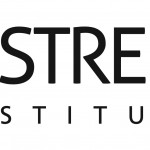

emailEditors Note: This is a re-posted article from April 2012 to provide easily referenced information on Tabata work. It comes to us from Kelsey Romshek. Kelsey is a CrossFit L1 Trainer, NSCA-CPT and he is a Firefighter/EMT-B, in Lincoln Nebraska. He also works as a trainer at CrossFit Lincoln.As Firefighters, we have to be fit, and we have to be strong. We wear over 70+ pounds of gear each time we go to work at an alarm. Our hydraulic tools weigh 40+ pounds. We have to move medical patients, rescue victims, and downed firefighters. That said, we have to be able to move our bodies efficiently, as well as be able to apply force to move external objects. This is where the CrossFit training program comes into play for Firefighters.As Chris has pointed out, CrossFit is simply “Constantly varied, functional movements, performed at high intensity.” How does CrossFit do this? By incorporating a good balance of three things: metabolic conditioning, gymnastics, and weight lifting. For quick reference, metabolic conditioning is considered to be a repetitive, full body movement that causes a rise is cardiorespiratory output such as running, rowing, or jump roping; gymnastics is simply moving the body through space; and weight lifting is applying force to move an external object.In February, Travis Rask wrote a great article about the back squat. I couldn’t agree more with what Travis wrote about the back squat and the importance of lifting and training heavy for our profession. But what about the guys in the fire houses that don’t have access to that equipment? What about when guys take off on a vacation to the beaches of Cancun, or the mountains of Colorado? How can they maintain what they’ve trained so hard for
Taken from:
TABATA Training









 For now classes are 6pm and 640pm at 2840 Wildwood st in the Boise Cloggers studio.
Book your class NOW!
click this ==>
For now classes are 6pm and 640pm at 2840 Wildwood st in the Boise Cloggers studio.
Book your class NOW!
click this ==>








